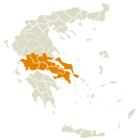Search
Hotel Name
Location
Attica Hotels, Attica Central Greece Hotel Directory

Hotel Name
Location
GreekHotels > Central Greece






Information About Attica Region

Located in the south of the country, Attica covers about 3,808 square kilometers. In addition to Athens, it contains within its area the cities of Peiraeus, Eleusis, Megara, Laurium, and Marathon, as well as a small part of the Peloponnese peninsula and the islands of Salamis, Aegina, Poros, Hydra, Spetses, Kythira, and Antikythera. About 3,750,000 people live in the periphery, of which more than 95% are inhabitants of the Athens metropolitan area. Athens was originally the capital of Central Greece.
Attica is a peninsula jutting into the Aegean Sea. It is naturally divided to the north from Boeotia by the 10 mi (16 km) long Kithairon mountain range. Mountains separate the peninsula into the plains of Pedia, Mesogeia, and Thriasia. The mountains include Hymettus, the eastern portion of Geraneia, Parnitha, Aigaleo and the Penteli mountains. To the north it is bordered by the Boeotian plain and to the west it is bordered by Corinth. The Saronic Gulf lies to the south and the island of Euboea lies off the north coast. Athens' first and only large reservoir, Lake Marathon, is about 42 km (26 mi) northeast and is called the Marathon Dam, which first opened in the 1920s. Since that time, it has been Attica's largest lake. Forests cover the area around Parnitha, around Hymettus and into the northeast and the north in the hills and the mountains, except for the mountaintops, but the mountains to the west and the south are grassy, barren or forested.

The Cephisus River is the longest river, and Parnetha or Parnitha is the tallest mountain in Attica. The prefecture also has parklands in the Hymettus, Penteli and the Parnitha mountains and the southern part of the peninsula. According to Plato, Attica's ancient boundaries were fixed by the Isthmus, and in the direction of the continent they extended as far as the heights of Cithaeron and Parnes. The boundary line came down in the direction of the sea, having the district of Oropus on the right, and with the river Asopus as the limit on the left.
The climate is typically Mediterranean, with hot dry summers and generally low rainfall totals. Annual precipitation varies from 370 mm to over 1000 mm. Winters are cool and generally mild in the low-lying areas adjacent to the sea, but are harsher in the mountains. It is often the case that snowfalls cause disruption in areas of Attica, although these disruptions are rarely widespread for the whole of the region of Athens, with the latest cases being in January 2002, February 2004 and January 2006. The absolute minimum temperature of the region is -10.4°C and was recorded at Votanikos, Athens, while the highest temperature was recorded at Tatoi (airport) and was +48.7°C. Forest fires and flash floods are common.

Exact, partial, brief, paraphrased or adapted reproduction or republication of the contents and design of this website by any means
mechanical, electronic, photocopied or otherwise without previous authorisation from the legal owner is strictly forbidden.
Copyright © 1994 - 2024 www.greekhotels.gr (KAVI CLUB S.A. - Travel Services in Greece)
Find your hotel.
Type the name, select from the list and click go.
Hotels and Apartments in Central Greece.